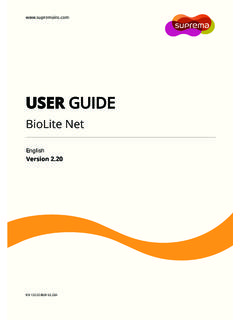Transcription of basic router security
1 basic router security Aaron Balchunas * * * All original material copyright 2007 by Aaron Balchunas unless otherwise noted. All other material copyright of their respective owners. This material may be copied and used freely, but may not be altered or sold without the expressed written consent of the owner of the above copyright. Updated material may be found at 1 - basic router security - Enable Passwords The enable password protects a router s Privileged mode. This password can be set or changed from Global Configuration mode: router (config)# enable password MYPASSWORD router (config)# enable secret MYPASSWORD2 The enable password command sets an unencrypted password intended for legacy systems that do not support encryption.
2 It is no longer widely used. The enable secret command sets an MD5-hashed password, and thus is far more secure. The enable password and enable secret passwords cannot be identical. The router will not accept identical passwords for these two commands. Line Passwords and Configuration Passwords can additionally be configured on router lines, such as telnet (vty), console, and auxiliary ports. To change the password for a console port and all telnet ports: router (config)# line console 0 router (config-line)# login router (config-line)# password cisco1234 router (config-line)# exec-timeout 0 0 router (config-line)# logging synchronous router (config)# line vty 0 4 router (config-line)# login router (config-line)# password cisco1234 router (config-line)# exec-timeout 0 0 router (config-line)# logging synchronous The exec-timeout 0 0 command is optional, and disables the automatic timeout of your connection.
3 The two zeroes represent the timeout value in minutes and seconds, respectively. Thus, to set a timeout for 2 minutes and 30 seconds: router (config-line)# exec-timeout 2 30 The logging synchronous command is also optional, and prevents system messages from interrupting your command prompt. By default, line passwords are stored in clear-text in configuration files. To ensure these passwords are encrypted in all configuration files: router (config)# service password encryption basic router security Aaron Balchunas * * * All original material copyright 2007 by Aaron Balchunas unless otherwise noted. All other material copyright of their respective owners.
4 This material may be copied and used freely, but may not be altered or sold without the expressed written consent of the owner of the above copyright. Updated material may be found at 2 Disabling Unnecessary Services Cisco IOS devices support many services that may pose a risk to the network. These services, if unneeded, should be disabled. Additionally, any interfaces that are not being used should be disabled using the shutdown command: router (config)# interface ethernet0 router (config-if)# shutdown BOOTP can be used by Cisco devices to load copies of the IOS to other Cisco devices, and is enabled by default. To disable this service: router (config)# no ip bootp server CDP (Cisco Discovery Protocol) allows Cisco devices to discover information about other directly connected Cisco devices, and is enabled by default.
5 CDP can be disabled either globally or on a per-interface level: router (config)# no cdp run router (config)# interface ethernet0 router (config-if)# no cdp enable Cisco devices can load their startup-configuration files from a remote FTP server, though this service is disabled by default. Either of the following commands will prevent the router from doing this: router (config)# no boot network router (config)# no service config If a device name or unrecognized command is typed into the IOS command line, the IOS will attempt to resolve the name using DNS. By default, the IOS will broadcast ( ) this request. To specify a specific DNS server for name resolution: router (config)# ip name-server DNS name resolution can be disabled if necessary: router (config)# no ip domain-lookup basic router security Aaron Balchunas * * * All original material copyright 2007 by Aaron Balchunas unless otherwise noted.
6 All other material copyright of their respective owners. This material may be copied and used freely, but may not be altered or sold without the expressed written consent of the owner of the above copyright. Updated material may be found at 3 Disabling Unnecessary Services (continued) Cisco routers , as of IOS , can function as an FTP server. This can be useful to copy configuration files back and forth from your router . However, this could also allow an unauthorized person to gain access to the router file system. This service is disabled by default as of IOS To manually disable this service: router (config)# no ftp-server write-enable Earlier version of the IOS may use the following syntax: router (config)# no ftp-server enable To disable the TFTP equivalent: router (config)# no tftp-server flash The Finger service allows someone to query what users are logged into a device, and is enabled by default.
7 This is the same information displayed when the show users command is inputted. To disable the finger service: router (config)# no ip finger router (config)# no service finger The Cisco IOS now supports a basic HTTP management interface. However, access to this interface should be regulated. If the HTTP interface is unnecessary, disable it using the following command: router (config)# no ip http server A Cisco device can respond to an ICMP Mask Request, providing the requestor with the subnet mask of an interface, though this is disabled by default. To manually disable: router (config)# interface Ethernet 0 router (config-if)# no ip mask-reply Source Routing allows a sending device to dictate the exact routing path to a destination, a function which can be exploited by a malicious user.
8 Source Routing is enabled by default. To manually disable: router (config)# no ip source-route basic router security Aaron Balchunas * * * All original material copyright 2007 by Aaron Balchunas unless otherwise noted. All other material copyright of their respective owners. This material may be copied and used freely, but may not be altered or sold without the expressed written consent of the owner of the above copyright. Updated material may be found at 4 Disabling Unnecessary Services (continued) By default, Cisco devices will respond to ICMP Unreachable Messages, informing the requestor which IP addresses are reachable (or not). These messages should be disabled to deny a malicious user potentially compromising information: router (config)# interface serial 0 router (config-if)# no ip unreachable Network Time Protocol (NTP) can be used to synchronize the time on all Cisco devices to a central time source.
9 A router can function as either an NTP client or server. Useful as this is, NTP has recognized security flaws and can be compromised. NTP authentication can (and should) be utilized (explained in a different section). To completely disable NTP on an interface: router (config)# interface ethernet 0 router (config-if)# ntp disable Proxy ARP allows for resolution of Layer 2 addresses across multiple interfaces of a router . Essentially, devices in separate IP subnets can act as if they are on the same physical segment. This should NOT be enabled on any interface connecting to an untrusted network, as it could allow someone to spoof the MAC of a trusted host. Proxy ARP is enabled by default on all interfaces (.)
10 Bastards!). router (config)# interface ethernet 0 router (config-if)# no ip proxy-arp Cisco devices support various UDP and TCP Small Servers, including: Echo echoes what you type to screen Discard discards whatever is typed Chargen generates a stream of ASCII data Daytime displays system date and time These services were enabled by default up until IOS , and now are disabled by default. All of the Small Servers were susceptible to DOS attacks, and thus should be disabled: router (config)# no service tcp-small-servers router (config)# no service udp-small-servers basic router security Aaron Balchunas * * * All original material copyright 2007 by Aaron Balchunas unless otherwise noted.

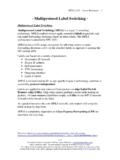
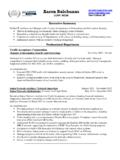
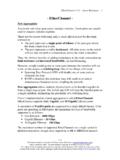
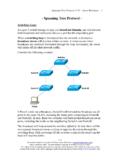
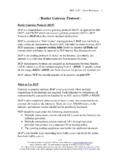
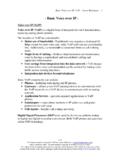
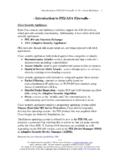
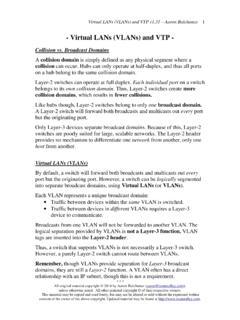
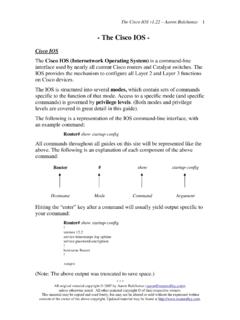
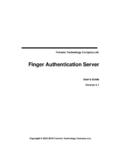

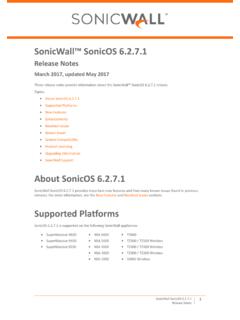
![DBT in Fertilizers [POS DEVICE ERROR HANDLING]](/cache/preview/3/3/a/a/d/6/8/9/thumb-33aad689c09001ef0b74525265bd1d20.jpg)


